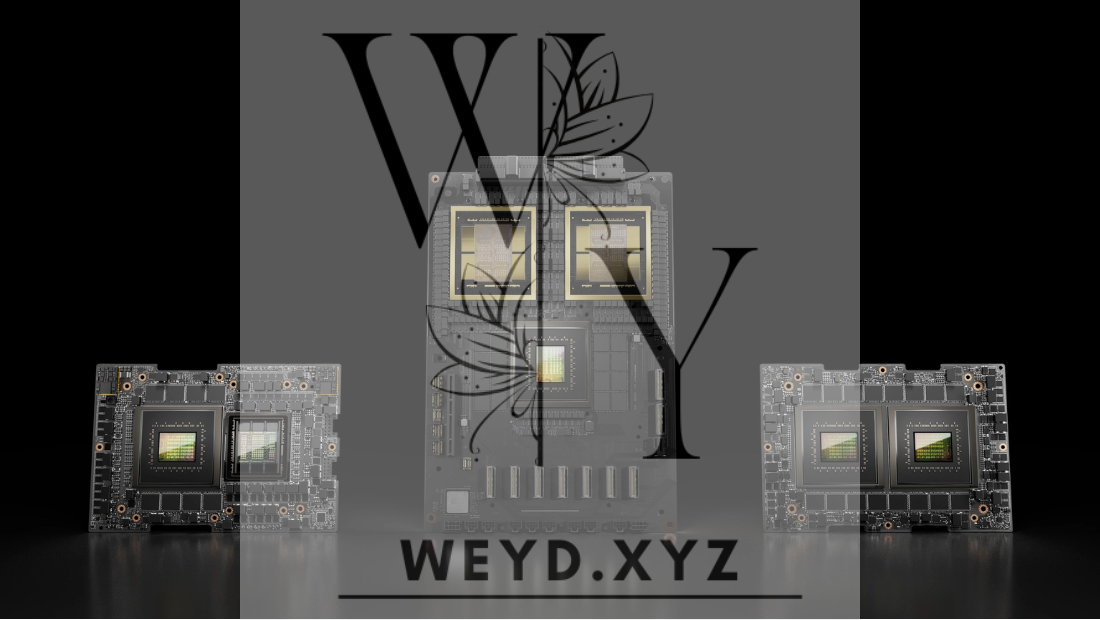Blog
Maximizing Power Efficiency with NVIDIA Advanced Technologies for Sustainable Performance
With the rise in global energy demands and the exponential growth of high-performance computing (HPC) applications, achieving sustainable performance has become critical in the tech industry. NVIDIA, a leader in graphics processing units (GPUs) and artificial intelligence (AI) solutions, has been at the forefront of addressing these challenges by developing advanced technologies that maximize power efficiency. NVIDIA’s innovations not only reduce energy consumption in data centers and edge computing environments but also extend the battery life and enhance the performance of consumer devices, such as gaming consoles, laptops, and mobile devices. This article explores how NVIDIA’s power-efficient technologies are paving the way for sustainable computing, benefiting both industry and the environment.
The Importance of Power Efficiency in Modern Computing
As computing demands rise, power efficiency has become essential to support the increasing need for complex calculations, data processing, and real-time analytics in areas like AI, virtual reality (VR), and machine learning (ML). Data centers, supercomputers, and even personal devices generate substantial energy demand, contributing to increased operational costs and a larger carbon footprint. Enhancing power efficiency not only reduces these costs but also makes high-performance computing more environmentally friendly.
NVIDIA is addressing these concerns through technologies designed to optimize power use, balance workload distribution, and reduce the energy impact of computing systems, all while delivering powerful and reliable performance.
Key NVIDIA Technologies for Power Efficiency
NVIDIA’s power efficiency initiatives include a wide range of advanced technologies, from energy-efficient GPUs to intelligent workload management systems. Here are some of the key technologies that make NVIDIA a leader in sustainable performance:
1. NVIDIA Ampere Architecture
The Ampere architecture, one of NVIDIA’s most advanced GPU architectures, delivers remarkable performance improvements with energy efficiency at its core. Launched in 2020, Ampere is designed to power everything from data centers and supercomputers to personal devices and AI applications.
- Third-Generation Tensor Cores: Ampere’s third-generation Tensor Cores improve AI performance by enabling faster matrix operations, which are central to machine learning and deep learning applications. These cores also support sparsity (removing unnecessary computations), enhancing efficiency and reducing the amount of energy required for AI workloads.
- Multi-Instance GPU (MIG) Technology: NVIDIA’s MIG technology allows a single GPU to be partitioned into multiple instances, each running separate workloads. This feature ensures optimal resource usage by dynamically allocating GPU resources based on the needs of each application, reducing energy consumption by avoiding over-provisioning.
- Energy-Efficient Memory: The Ampere architecture features GDDR6X memory, which uses NVIDIA’s Dynamic Voltage-Frequency Scaling (DVFS). DVFS adjusts power and frequency dynamically based on workload requirements, optimizing power use and reducing heat generation, which ultimately contributes to greater energy efficiency.
2. NVIDIA Max-Q for Laptops
NVIDIA’s Max-Q technology is a design approach that brings powerful GPUs to thin and lightweight laptops without compromising battery life or thermal performance. Initially designed for gaming laptops, Max-Q is now implemented in various applications, from business laptops to creative workstations.
- Dynamic Boost 2.0: Dynamic Boost automatically shifts power between the GPU, CPU, and GPU memory based on real-time workloads, optimizing power distribution across components to maximize performance without overheating or wasting energy.
- WhisperMode 2.0: WhisperMode lowers the power output of NVIDIA GPUs in laptops, reducing fan noise and improving battery life by intelligently managing thermals. This makes Max-Q laptops quieter and more power-efficient, offering users a balanced experience of performance and energy conservation.
- Advanced Optimus: NVIDIA’s Advanced Optimus technology automatically switches between discrete and integrated graphics depending on workload, allowing the laptop to conserve battery during low-power tasks and ramp up performance during graphics-intensive activities.
These features make Max-Q an ideal solution for achieving power efficiency in laptops, enabling portable devices to run demanding applications without sacrificing energy efficiency or battery life.

3. NVIDIA Deep Learning Super Sampling (DLSS)
DLSS is an AI-driven technology that uses deep learning algorithms to enhance graphics quality and performance while minimizing power consumption. By rendering images at a lower resolution and using AI to upscale them, DLSS provides high-quality visuals without overtaxing the GPU.
- Efficient Rendering: DLSS enables GPUs to process fewer pixels and then upscale them to achieve high-resolution graphics. This approach saves processing power, which translates to reduced power consumption and extended battery life in devices like gaming consoles and laptops.
- Enhanced Gaming Performance: For gaming applications, DLSS improves frame rates without requiring excessive GPU resources. By reducing workload on the GPU, DLSS allows gaming devices to deliver high-quality visuals and immersive experiences without draining battery life or generating excessive heat.
DLSS is a game-changer in the gaming and graphics industries, allowing users to enjoy high-fidelity experiences with minimal impact on power usage, making it a sustainable choice for modern gaming.
4. NVIDIA Grace CPU for Data Centers
The NVIDIA Grace CPU, a high-performance processor built specifically for AI and high-performance computing workloads, represents NVIDIA’s commitment to sustainable performance in data centers. By providing energy-efficient computing power, the Grace CPU enables data centers to process complex computations with reduced energy requirements.
- High-Efficiency Processing: Designed with a focus on efficiency, the Grace CPU delivers optimized performance for AI and ML tasks, using only the necessary amount of energy to achieve high computational throughput.
- Memory and Bandwidth Efficiency: The Grace CPU leverages NVIDIA’s high-bandwidth memory technology, which reduces the energy needed for data transfer between components, enhancing overall efficiency in data centers.
The NVIDIA Grace CPU represents a significant step forward in reducing the energy costs of large-scale data processing and AI tasks, making data centers more sustainable by minimizing energy consumption and cooling requirements.
5. NVIDIA BlueField Data Processing Unit (DPU)
NVIDIA’s BlueField DPU is designed for offloading, accelerating, and isolating data center infrastructure tasks from the CPU, which can improve efficiency and save energy. The DPU processes and manages network, storage, and security tasks more efficiently than general-purpose CPUs.
- Offloading Network Tasks: By offloading network processing from the main CPU to the DPU, BlueField reduces the CPU’s workload, enabling it to focus on core processing tasks while conserving energy.
- Accelerated Infrastructure Management: BlueField DPUs manage tasks like load balancing, encryption, and firewall protection, reducing the need for dedicated hardware, which can decrease energy consumption in data centers.
- AI-Driven Optimization: BlueField DPUs also leverage AI for managing infrastructure operations, allowing data centers to dynamically optimize resources and reduce power consumption during low-traffic periods.
The BlueField DPU allows data centers to enhance efficiency by reducing the power consumption of infrastructure management, making it an essential part of NVIDIA’s approach to sustainable computing.
6. NVIDIA GPU Cloud (NGC)
NVIDIA GPU Cloud (NGC) offers a suite of GPU-optimized software for AI, deep learning, and data analytics. NGC allows developers and researchers to access optimized models and workflows, minimizing power consumption by eliminating the need to build and run power-intensive workloads from scratch.
- Pre-Optimized Workflows: NGC provides pre-trained models and frameworks optimized for NVIDIA GPUs, reducing the computational power needed to train models from scratch.
- Efficient Resource Utilization: By using NGC, data scientists can leverage the cloud for efficient resource allocation and scaling, ensuring that power usage is optimized even for complex, resource-heavy applications.
NGC enables organizations to achieve more sustainable AI research and development by reducing the need for redundant computational processes, ultimately lowering power consumption in large-scale projects.
Benefits of NVIDIA’s Power Efficiency Initiatives
NVIDIA’s commitment to maximizing power efficiency brings numerous benefits across various industries, supporting both productivity and sustainability.
1. Reduced Operating Costs
By improving power efficiency, NVIDIA’s technologies help reduce energy costs for data centers and enterprises, particularly those handling AI and high-performance computing tasks. This results in significant savings over time, as well as a lower total cost of ownership (TCO) for data centers and other facilities that rely on power-hungry equipment.
2. Extended Device Lifespan
In consumer electronics, power-efficient components reduce the stress on hardware, leading to lower heat generation and extended battery life. This not only improves the user experience but also contributes to device longevity, reducing electronic waste and supporting a more sustainable tech ecosystem.
3. Enhanced Sustainability
As a major player in the tech industry, NVIDIA’s focus on power efficiency aligns with global efforts to combat climate change. By reducing energy consumption, NVIDIA’s technologies help lower the carbon footprint of data centers, edge computing, and personal devices, contributing to a more sustainable technology landscape.
4. Scalable AI and HPC Solutions
NVIDIA’s power-efficient technologies enable organizations to scale AI and HPC solutions without a proportional increase in energy consumption. This scalability is essential for businesses and research institutions that need to expand their computational capabilities while maintaining a commitment to environmental sustainability.
Future of NVIDIA’s Power Efficiency Efforts
As the demand for high-performance computing grows, NVIDIA is expected to continue innovating in power-efficient technologies. Future developments may include enhanced AI-driven power management algorithms, even more efficient architectures, and improvements in cloud computing solutions. NVIDIA’s focus on sustainability and performance will likely drive ongoing advancements that will make computing not only more powerful but also more responsible.
Conclusion
NVIDIA’s advanced power efficiency technologies are transforming the landscape of high-performance computing, making it possible to achieve sustainable performance without compromising on power or capability. From the Ampere architecture and DLSS for gaming to Grace CPUs and BlueField DPUs for data centers, NVIDIA’s solutions address power efficiency across various applications, enabling organizations to reduce their energy impact and improve operational sustainability.
As the tech industry moves towards a greener future, NVIDIA’s commitment to power-efficient innovation demonstrates the potential of technology to support both productivity and environmental goals, leading the way for sustainable performance in the digital age.


